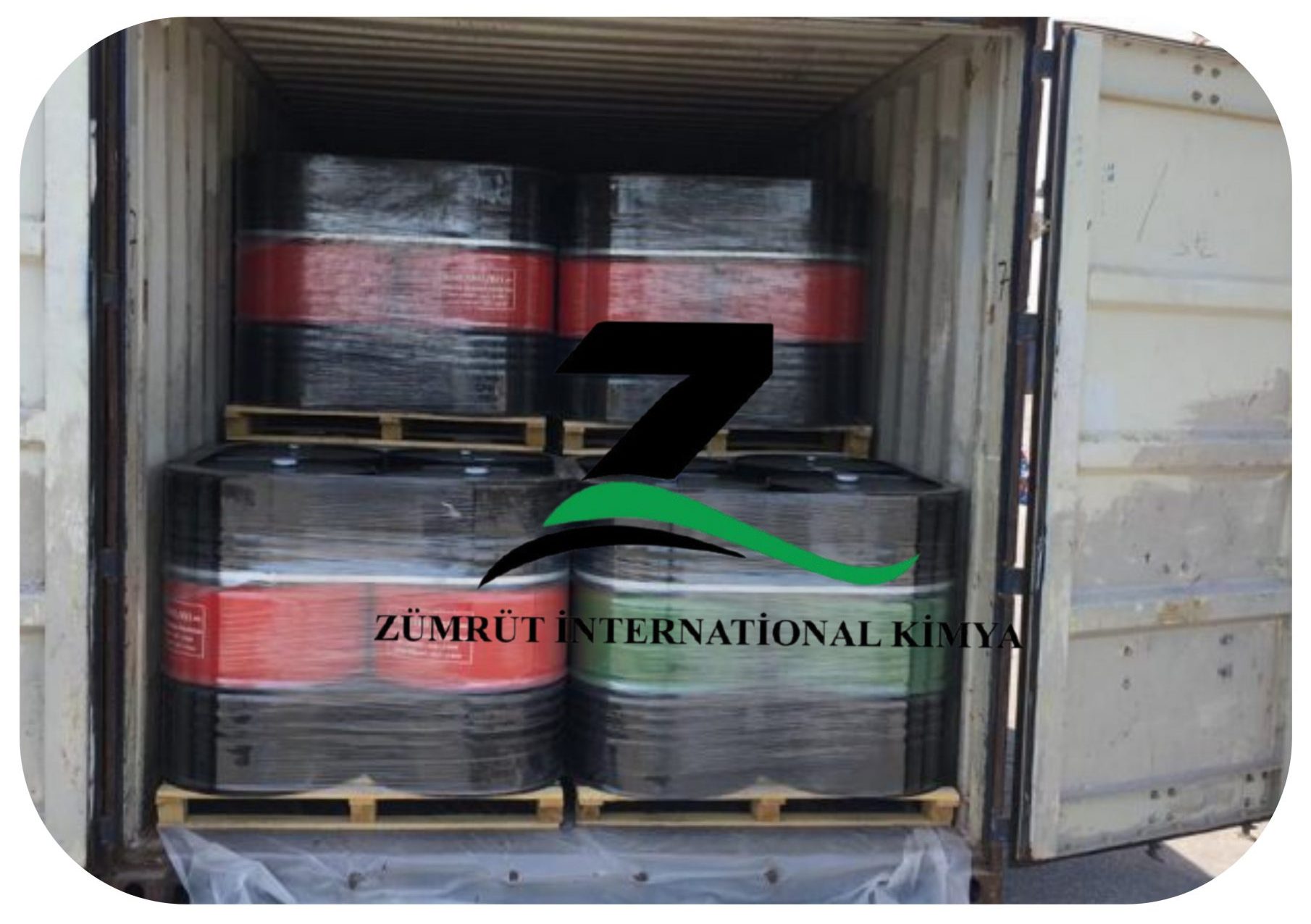
Bitumen Emulsion CMS-2 is a medium-setting cationic asphalt emulsion that reacts quickly with the aggregate to convert from an emulsion to asphalt.
Asphalt emulsions are classified according to the electric charge that surrounds the emulsion’s asphalt particles (i.e. whether it is a cationic or an anionic emulsion) and how quickly the suspended asphalt particles separate from the surrounding water (“breaking”).
A medium-setting emulsion is one that will break moderately fast when in contact with aggregate. Emulsion asphalt CMS-2 is a cationic emulsion. Emulsion asphalt CMS-2 is usually made by passing the mixture of hot Asphalt and water phase between a rotating disc, cone or wheel and a stator. Based on specifications it may contain other additives, such as stabilizers, coating improvers, anti-strips, or break control agents.
It is well known that water and asphalt will not mix, except under carefully controlled conditions using highly specialized equipment and chemical additives. If you are more interested in product information or need to place an order contact or inquire about our Sales team.
Application of Bitumen Emulsion CMS-2
While general guidelines can be given for selecting emulsions, laboratory testing is strongly recommended. There is no substitute for a laboratory evaluation of the emulsion and the aggregate to be used. Different types and quantities of emulsion should be tried with the aggregate to find the best combination for the intended use. An experienced technician can determine the type and grade of the emulsion to be used.
- Environmental considerations.
- Proper application for pavement preservation or pavement distresses.
- Traffic type and volume.
Advantages of Bitumen Emulsion CMS-2
- Wide variety of emulsion types available today
- Economical
- Free from danger ( for fire )
- Environmental
- Harmless for worker health.
Difference between Cationic Bitumen Emulsion CMS-2 and CMS-2h
The main difference between Cationic Bitumen Emulsion CMS-2 and CMS-2H lies in their performance and application under different environmental conditions. CMS-2 is the standard cationic bitumen emulsion, which is used predominantly for hot-mix asphalt surface and base courses and, in moderate climates, for cold mix. It adheres well to aggregates and is widely used in road construction and maintenance projects.
CMS-2H, with the “H” indicating “High,” is a specialty version of CMS-2 for use in high-temperature conditions. It is a higher viscosity that allows it to function optimally at higher temperatures by reducing the rate of evaporation, thus bonding and curing more efficiently. Both emulsions find application in the same applications, but CMS-2H is used for areas with high heat because it provides superior performance and durability under high-temperature conditions.
Packing
Packing of bitumen emulsion is in a new thick steel drum on a pallet to prevent any leak inside of container also bulk in bitutainer and tanker.
Specification
| Property | min | max | Test method |
|---|---|---|---|
| Viscosity, Saybolt Furol at 50 °C, SFS | 50 | 450 | ASTM D244 |
| Storage stability test, 24-h, % | __ | 1 | ASTM D6930 |
| Coating, dry aggregate | Good | __ | ASTM D244 |
| Coating, after spraying | Fair | __ | ASTM D244 |
| Coating, wet aggregate | Fair | __ | ASTM D244 |
| Coating, after spraying | Fair | __ | ASTM D244 |
| Particle charge test | Positive | Positive | ASTM D244 |
| Sieve test, % | __ | 0.1 | ASTM D6933 |
| Oil distillate, by volume of emulsion, % | __ | 12 | ASTM D6997 |
| Residue, % | 65 | __ | ASTM D244 |
| Penetration, 25°C (77°F), 100 g, 5 s | 100 | 250 | ASTM D5 |
| Ductility, 25°C (77°F), 5 cm/min, cm | 40 | __ | ASTM D113 |
| Solubility in trichloroethylene, % | 97.5 | __ | ASTM D2042 |
FAQs
1. How does CMS-2 differ from other emulsions like RS, MS, or SS types?
CMS-2 is a cationic bitumen emulsion of medium viscosity and setting. It gives workability and adhesion in equal measures, thus ideal for use in various road construction processes like tack coats, prime coats, and surface dressings. CMS-2 has a faster setting time than the slow-setting ones but longer working time than rapid-setting ones.
2. Does CMS-2 require heating before application?
No, CMS-2 is cold-applied and is not heated, improving worker safety and reducing environmental hazards caused by fumes from hot bitumen.
3. What is the shelf life of CMS-2 emulsion?
Proper storage in airtight containers away from sunlight and harsh temperature conditions allows CMS-2 to last for 4 to 6 months. Stir the emulsion before application to distribute evenly.
4. Will CMS-2 be used in rainy or humid conditions?
Yes, CMS-2 is cationic in nature and can thus be applied in damp and wet conditions. However, for optimal performance, do not apply in rain to avoid good adhesion and curing.
5. May CMS-2 be used for tack coat or surface dressing?
CMS-2 is suitable for use in both tack coat and surface dressing. It possesses medium setting properties with excellent adhesion and durability and is therefore applicable to most forms of road maintenance and construction work.

